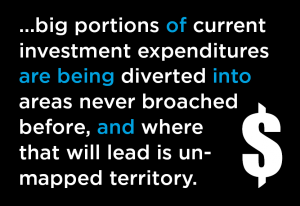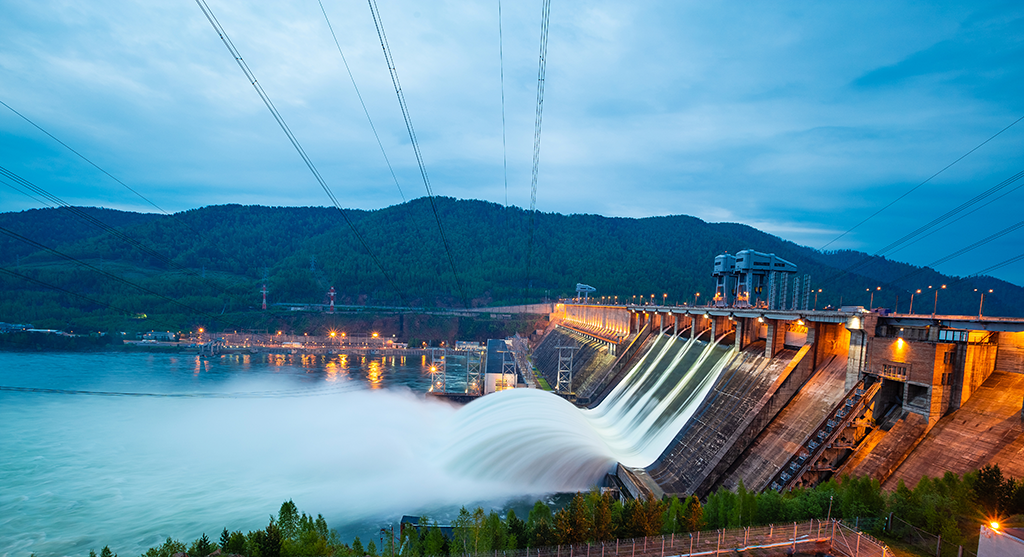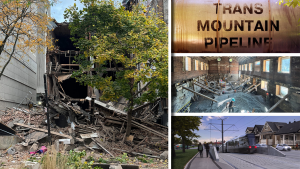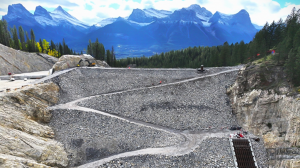There’s a shorthand way of looking at some of the key implications for the construction industry from the major push underway everywhere to reduce carbon emissions. It’s to consider how fossil fuels are used in production processes currently and what the opportunities are for their replacement by non-polluting substitutes.
 There’s another important thread that runs through the discussion. The conversions that are being made necessary to achieve a cleaner environment are highly important for the quality of life on this planet. Additionally, however, they are extremely expensive.
There’s another important thread that runs through the discussion. The conversions that are being made necessary to achieve a cleaner environment are highly important for the quality of life on this planet. Additionally, however, they are extremely expensive.
If you’re wondering where the capital spending dollars are going, they’re no longer all being allocated to the expansion of facilities. Rather big portions of current investment expenditures are being diverted into areas never broached before, and where that will lead is unmapped territory.
Steelmaking
��There are two primary ways to make steel. The ‘old’ way is by means of BOFs, basic oxygen furnaces, better known as blast furnaces. Coal, and more specifically coking coal, is a key ingredient in BOF steelmaking. It provides the heat to melt iron ore and it helps to purify it. The use of coal in the production process, though, leads to significant carbon fallout. There are steelmakers around the world, perhaps foremost in Sweden, which are experimenting with burning gaseous hydrogen to supply the heat needed in the BOF steelmaking process.
The other ‘new’ means and chief alternative to BOF steelmaking is the EAF (electric arc furnace) approach. Coal plays no role in EAF steelmaking. Rather, the flow of an electric current is used to melt scrap steel and turn scrap iron into its purer form. EAF steelmaking is a solid advance in de-carbonization, as long as the electricity comes from a renewable source. It now accounts for the majority of steel output in the U.S.
��Cement and Concrete
Cement is made by mixing and heating limestone, clay, and sand in historically-established proportions inside a rotary kiln. The resulting ‘clinker’ cement, after it is cooled, is ground into the powder that everyone recognizes as garden-variety cement. All manner of fossil fuels (oil, natural gas, and most common of all, coal) have been employed over the years to heat the kilns in which cement is initially baked.
Cement makers have a CO2 reduction challenge on two fronts. CO2 in cement making is released not only from the burning of coal, gas, or oil in the heating process, but also from a chemical process known as calcination, in which limestone is reduced to lime.
Cement is the adhesive that, when mixed with water, binds sand and aggregate (stones) to form concrete. Concrete is carried to job sites in either ready-mix or volumetric trucks. In the former, the drum or barrel on the truck keeps the ingredients always in motion, preventing them from congealing, and keeping them ready for immediate pouring. In the latter, the ingredients of concrete are taken to where they’re about to be utilized and are mixed on the spot. It’s during the transporting and mixing that carbon emissions occur. Concrete trucks presently run on diesel fuel or compressed natural gas (CNG).
Aluminum
Deriving final stage aluminum is a step-by-step reduction process that begins with bauxite. The final purifying step employs electrolysis. Therefore, the degree to which the production of aluminum can be called ‘green’ depends on where the electricity for electrolysis comes from. Canada is fortunate in that its aluminum plants in Quebec and British Columbia draw on hydroelectric sources of power. Hydro, wind, solar, geothermal, and nuclear are considered the renewable energy alternatives to fossil fuels.��
Drywall/Gypsum
The traditional way to make drywall is to compress wet gypsum between two thick sheets of recycled paper, then send it along a lengthy roller until it is semi-dry, so it can be cut into sheets. The sheets are then placed in a kiln for final drying. There are particulate matter (PM) emissions during the production process; and there are gaseous emissions (CO2) from burning fuels to heat the drying chambers. The challenge is to find the most climate friendly means to fire up the kilns.
Glass
Giant glass-making operations run their furnaces for heat 24/7. They never turn them off. To reduce carbon emissions, it’s a matter of which fuel option will offer the best combination of source reliability and reasonable price. As with some of the other de-carbonizing alternatives set out already, hydrogen is a fuel thought to have considerable potential.
Glass is made from liquid sand (silica), with a few other ingredients included (e.g., soda ash, which is sodium carbonate). To reach the high temperature needed to make glass and keep the degree-of-heat level consistent, scientists in Germany have been experimenting with the burning of hydrogen as an alternative to natural gas. First indications are that it can be used for such a purpose, producing only water as a by-product.
Lumber
While it’s not always the case, in the forestry sector, there are many instances where a happy circumstance comes into play. Sawmills, located in remote locations, are often able to generate their own electricity through damming up local streams and riverways. Alternatively, they can burn their own wood waste, including, sawdust, as a way to generate steam, turn turbines, and draw power. Burning wood does release carbon, but it is generally considered to be an acceptable offset to the carbon absorbed by leafy sink-tanks during their lifespans.
Hydrogen
Hydrogen is different from the other materials that have been mentioned in this article in that it is a fuel, but it also has to be produced or extracted. Several different colors have been applied to the production of hydrogen, each carrying an environmental impact assessment. ��
Black’ and ‘brown’ hydrogen is produced from coal or natural gas through a chemical process called steam reforming. ‘Grey’ hydrogen uses steam reforming to separate hydrogen from methane in natural gas. When the carbon released in the ‘grey’ process is captured and stored, then the type of hydrogen acquired is termed ‘blue’ hydrogen.
All of the foregoing hydrogen extraction methods release gaseous pollutants such as carbon monoxide and carbon dioxide. Hydrogen gas atoms that are separated from oxygen in water through electrolysis are a form that’s termed ‘green’ hydrogen, provided the source of the electricity is renewable. From an environmental standpoint, this is the most favored form of hydrogen production. Proceeding even further with the color scheme, ‘yellow’ hydrogen is when solar power is used for electrolysis; ‘red’ or ‘pink’ hydrogen is when the power source is nuclear.
Bottom Line
In days gone by, one of the reasons corporate capital spending was welcomed so enthusiastically was an inherent understanding of its inflation-busting property, through capacity expansions and additions to the supply of output. Monumental amounts of capital expenditures now (and for the foreseeable future) are being sent in a different direction. Set aside thoughts of how the Consumer Price Index (CPI) is behaving. There’s a lot more occurring on the cost side of the economy than just inflation.
Alex Carrick is Chief Economist for ɫ��ɫ. He has delivered presentations throughout North America on the U.S., Canadian and world construction outlooks. Mr. Carrick has been with the company since 1985. Links to his numerous articles are featured on Twitter��, which has 50,000 followers.











Why have Hemp products like hemp insulation, hemp drywall or Hemp Crete building modules or blocks not even been mentioned here.? All levels of government are offering incentives to build green. I would think with the Agricultural lands in GGH and surrounding areas, savvy investors would be all over the Hemp industry and green products potential it offers. The future is green folks… not entrenched in way things have been done in the past.